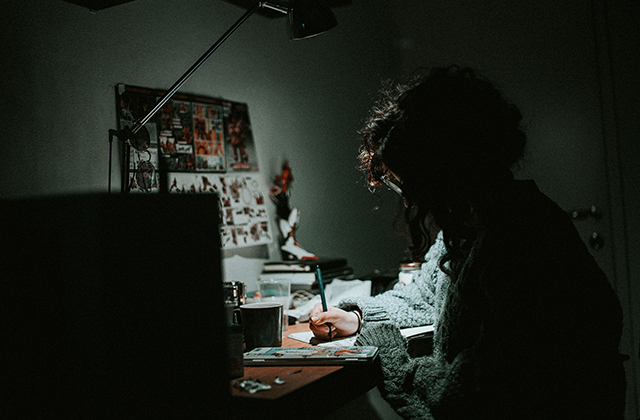In an industry driven by vision, timing, and storytelling, the role of a storyboard artist has long been both critical and deeply human. But the landscape is shifting. With the emergence of powerful AI tools and machine learning models, storyboard artists are finding new ways to enhance creativity, compress production timelines, and deliver work that is more detailed, immersive, and adaptable than ever before.
This isn’t about machines replacing artists—it’s about amplifying what they’re capable of.
The New Era of Visual Storytelling
Traditionally, storyboard artists relied on pencil, paper, and then digital sketch pads to create sequential visual narratives. Whether for film, animation, commercials, or games, the job was inherently manual. But today’s creatives are stepping into a hybrid workflow where AI is not just assisting but actively collaborating.
Modern storyboard workflows are being redefined by AI tools capable of:
- Interpreting scripts and generating draft panels.
- Suggesting camera angles and scene transitions.
- Enhancing compositions with style consistency.
- Speeding up revisions by automating repetitive adjustments.
This integration has led to a fundamental shift in how professionals think about productivity and originality. AI doesn’t replace the artist’s eye—it provides a sharper lens through which to view their imagination.
From Drafting to Directing: Expanding the Artist’s Role
With AI handling time-consuming aspects of the process, storyboard artists are stepping into more strategic and creative roles. Instead of focusing solely on linework and layout, they are becoming:
- Visual directors—using AI to test shot variations, lighting moods, and dynamic pacing.
- Creative supervisors—managing AI-generated concepts to ensure alignment with narrative tone.
- Client liaisons—delivering faster iterations that allow stakeholders to visualize end products sooner.
This evolution transforms the value proposition of a storyboard artist website. No longer just a portfolio, it becomes a digital studio hub showcasing not just static samples but interactive story flows, animated previews, and AI-assisted concept reels.
The Rise of the Intelligent Workflow
Integrating AI into storyboarding isn’t just about creative augmentation—it’s about building smart pipelines. Tools like Runway, Storyboarder, Krikey AI, and even OpenAI’s image generation models are allowing artists to blend sketches, prompts, and references into cohesive scene development platforms.
Here’s a common intelligent workflow being adopted by forward-thinking professionals:
- Script ingestion: AI tools parse the screenplay and break it into visually distinct moments.
- Scene ideation: Text-to-image generators offer mood board alternatives to spark inspiration.
- Rough paneling: Artists use AI-assisted sketch tools to lay out compositions with faster iteration loops.
- Style application: Custom-trained models can mimic an artist’s style, maintaining consistency across large sequences.
- Client feedback: AI-generated variants make it easy to offer choices without redrawing everything manually.
This smart pipeline isn’t just faster—it’s scalable. Freelancers can now take on larger projects. Studios can meet tighter deadlines. And the entire industry benefits from smoother pre-production timelines.
Redefining the Storyboard Artist Website
In this AI-enhanced future, the storyboard artist website is more than a gallery. It’s an interactive experience platform.
Leading artists are transforming their websites into portals that:
- Demonstrate AI-collaborative workflows.
- Feature before/after versions showing AI augmentation.
- Include dynamic sliders that reveal pencil-to-color transformations.
- Embed “choose-your-own-adventure” demos to showcase branching story logic.
Moreover, these websites often now include a behind-the-scenes look at their process, including the AI tools used. This transparency builds credibility and positions the artist at the forefront of innovation—something clients increasingly value in an era where speed and originality must coexist.
AI Doesn’t Eliminate Originality—It Demands It
There’s a persistent fear that AI may dilute artistic originality. But in the storyboard realm, it’s doing the opposite. Because AI can generate multiple variations of a concept in seconds, the artist becomes a curator—selecting the most powerful visual direction from a spectrum of possibilities.
This pushes creativity further. Artists no longer settle for the first draft. They explore alternative camera angles, compositions, and emotional beats. The result is a richer visual narrative, informed by machine suggestions but sculpted entirely by human instinct.
Real-Time Collaboration & Client Education
AI tools are also reshaping how storyboard artists collaborate with directors and producers. Through real-time rendering and instant scene suggestions, clients can sit in on the storyboarding process virtually and offer input early.
This reduces revision loops and ensures alignment faster. For clients unfamiliar with the technical language of film, AI-augmented visualizations provide a clear and compelling communication tool.
The storyboard artist website thus evolves again—becoming a portal not just for showcasing work, but for educating clients and streamlining pre-production workflows.
Challenges to Watch
Of course, with great power comes nuance. The use of AI in storyboarding introduces questions around:
- Copyright and IP: Who owns an AI-generated composition?
- Creative credit: How is authorship acknowledged when AI assists with ideation?
- Skill development: Are young artists learning foundational drawing techniques or skipping ahead?
The answer lies in balanced integration. Forward-thinking storyboard artists use AI as a tool, not a crutch—leveraging its speed and range while staying grounded in storytelling fundamentals.
The Competitive Edge of Future-Ready Artists
Artists who embrace AI are positioning themselves at the forefront of a new era in media production. Their storyboard artist website becomes a competitive differentiator—a showcase of speed, versatility, and forward-thinking capability.
Studios, advertising agencies, and streaming platforms are all under pressure to deliver faster and with higher production values. They’re not just hiring talent—they’re hiring workflows. And a storyboard artist who integrates AI into their pipeline offers not only creativity, but scalability.
Conclusion: The Future Is Collaborative
The future of storyboarding isn’t man vs. machine—it’s man with machine. AI is not the storyteller. It’s the assistant, the visual researcher, the lighting technician, and the revision tool—all rolled into one. The storyboard artist remains the director of imagination, using AI to sketch faster, explore deeper, and deliver more impactfully.
As we move forward, the most compelling stories will be shaped by artists who understand both narrative structure and technological capability. Their websites will reflect this evolution—no longer static portfolios but immersive platforms that blend art, innovation, and storytelling mastery.
And for those artists? The future is not just promising. It’s already here, frame by frame.


